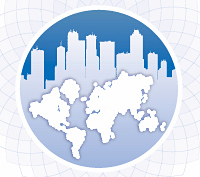Brisbane City Council

Brisbane Vision
Brisbane Vision 2031 is Brisbane City Council's long-term community plan for the city. It details the aspirations for our city's future and outlines ideas for achieving this vision.
Council developed eight programs to implement our Corporate Plan and over time help achieve the Brisbane Vision. Council and the community are working together to ensure we retain the important things about Brisbane for future generations. This will help us to make the right choices to achieve the future we want.
Download the Brisbane Vision documents and fact sheets.
Our New World City

In 2031, through strong partnerships with other levels of government, business and education institutions, Brisbane will grow and deliver a prosperous economy for its citizens.
Brisbane will be regarded as a top ten lifestyle city worldwide. Students, businesses, researchers, innovators and entrepreneurs from all over the world will want to live, study and work here.
Brisbane will be a leading destination in the Asia Pacific Region for major events and business, tourism and global conventions.
Our clean, green and sustainable city


In 2031, our healthy rivers, waterways, natural areas, parklands and biodiversity will attract businesses to establish here, and residents, students and employees to live, study and work in Brisbane.
Brisbane will have a range of healthy native plants and wildlife and well protected and connected habitat areas free of invasive species.
Residents and business will value water and its quality and demonstrate water smart behaviours in daily life, including conserving our water supply and protecting our waterways by ensuring only rain goes down the stormwater drain.
All residents and visitors will work with us to keep Brisbane clean, and reduce and recycle our waste.
Targets
By 2031:
- 40% of mainland Brisbane will be natural habitat
- Brisbane City Council will have maintained its carbon neutral status
- the average household's carbon emissions from energy, waste and transport will be six tonnes of carbon dioxide equivalent per year
- in partnership with our neighbours and the Queensland Government, waterway health will improve for the Lower Brisbane River Catchment, Bramble Bay, Waterloo Bay and East Moreton Bay
- the use and visitation by our communities of our waterways and bay will increase compared to 2013
- total domestic waste generated per annum going to landfill will be reduced compared to 2013
- domestic waste recycled/recovered will be increased compared to 2013.
What you can do
You can:
- join a local environment group, such as a Brisbane catchment and community group or a Habitat Brisbane group
- identify weeds and remove them from your garden
- if you have native bushland on your property, think about entering into a voluntary conservation partnership agreement, such as the Land for Wildlife program
- plant native species - Brisbane residents can collect two free native plants each year through Council's free native plants program
- clean up after your dog
- dispose of household hazardous waste responsibly
- recycle and reduce waste
- help reduce litter
- check Brisbane's air quality today
- plan a bike trip on a Brisbane bicycle path
- plan your next journey or commute using Brisbane's public transport
- get a free graffiti removal kit from Council and help keep Brisbane graffiti free
- visit one of Council's Environment Centres to learn more about Brisbane's natural areas.
What Council is doing
Council has released its Brisbane, Clean, Green Sustainable 2017-2031 plan that highlights our city's key sustainability achievements and outlines future targets and commitments to drive us towards a cleaner, greener and more sustainable city.
Other key projects, programs and initiatives include:
- Bushland Preservation Levy
- environmental and sustainability grants - assistance for non-profit community organisations for environmental activities
- Environment Centres
- Environmental Learning program
- Free Native Plants program
- Green Living program
- pest animals and invasive species
- protected vegetation
- Wildlife Conservation Partnership program.
City's progress
Council's current achievements:
- achieved carbon neutral status for Council operations in 2016-17, negating more than 800,000 tonnes of greenhouse gas emissions
- planted two million trees in the Brisbane local government area within four years - the largest project of its type worldwide, solely delivered by a local government in a defined local government area
- protected more than 15,000 hectares of bushland and parks
- more than 2000 parks across the city
- 37% natural habitat cover. Council is on-track for more than 40% natural habitat cover by 2031
- achieved the 500-hectare bushland acquisition target in 2011. Since 1990, 3000 hectares of significant bushland has been purchased through Council's Bushland Acquisition program
- purchased almost one million tonnes of accredited carbon offsets since 2007 to neutralise the carbon emissions from Council's bus, ferry, fleet vehicles and stationary gas use. Continued procurement of new buses has meant that over half the fleet is now the highest environmentally-friendly standard commercially available in Australia
- supported the renewable energy industry and reduced greenhouse gas emissions associated with Council’s electricity use by purchasing renewable energy and installing rooftop solar systems
- rehabilitated 58 local waterway sites to enhance waterway health. Sixty kilometres of waterway corridors were rehabilitated and maintained by catchment groups in association with Council.
READ MORE
